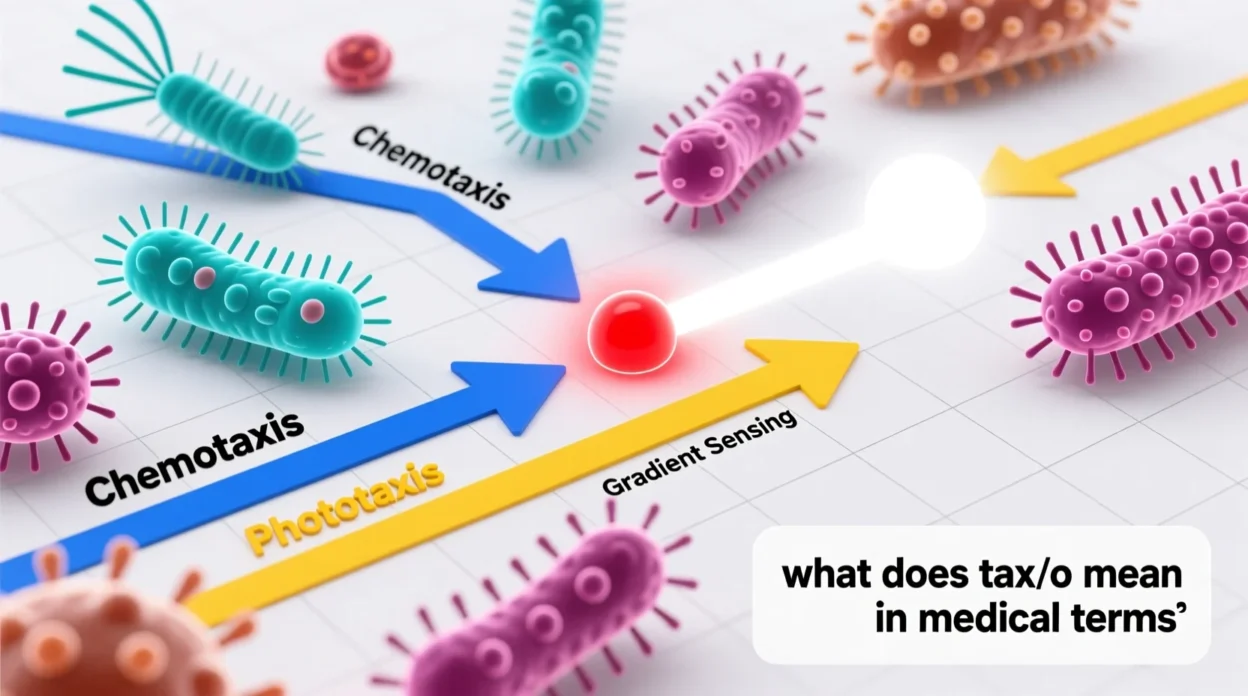Have you ever stumbled upon a medical term like TAX/O in textbooks, lab reports, or online health articles and wondered, what does that mean? Medical prefixes and roots can seem confusing at first, but understanding them is key to decoding complex terms in medicine and healthcare.
Quick Answer:
TAX/O is a medical root meaning “arrangement,” “order,” or “coordination.” It’s used in terms related to movement, organization, or response in biological systems, particularly in describing cellular or organismal behavior.
In this guide, we’ll break down what TAX/O means, how it’s used in medical terminology, and give real examples so it’s easy to understand and remember.
🧠 What Does TAX/O Mean in Medical Terms?
TAX/O comes from the Greek word “taxis”, which means arrangement, order, or coordination. In medicine, it is commonly used as a prefix to indicate how cells, organisms, or structures move, respond, or are organized.
- Usage: TAX/O is often combined with other roots or suffixes to describe movement or response to stimuli.
- Examples of related terms:
- Taxonomy – classification or arrangement (general biology)
- Chemotaxis – cell movement in response to chemicals
- Phototaxis – movement of organisms in response to light
Example:
Neutrophils exhibit chemotaxis toward infection sites.
Here, -taxis (from TAX/O) indicates the organized movement of neutrophils toward a chemical signal.
In short:
👉 TAX/O = arrangement, order, or movement coordination in medical and biological contexts.
📱 Where Is TAX/O Commonly Used?
The TAX/O root appears in medical, biological, and scientific contexts:
- 🔬 Cell Biology & Microbiology: Describing how cells move or respond to stimuli (chemotaxis, phototaxis).
- 🧬 Immunology: Explaining immune cell behavior and targeted movement.
- 🌱 Botany & Zoology: Studying organismal responses to environmental signals.
- 📚 Medical Terminology & Textbooks: Often used as a root in combined terms.
Tone & Usage Level:
- ✅ Scientific and technical
- ⚕️ Professional medical or biology context
- ❌ Not casual slang
- 🧑🏫 Educational, research, or clinical writing
💬 Examples of TAX/O in Medical Terms
Here are examples of common terms using TAX/O:
- Chemotaxis – movement of cells in response to chemical signals.
- Example: “White blood cells show chemotaxis toward infection.”
- Phototaxis – movement of organisms toward or away from light.
- Example: “Certain bacteria display positive phototaxis toward light sources.”
- Geotaxis – movement of organisms in response to gravity.
- Example: “Larvae exhibit negative geotaxis by swimming upward.”
- Thermotaxis – movement in response to temperature changes.
- Example: “Some insects use thermotaxis to locate optimal temperatures.”
- Taxonomy – classification or arrangement of organisms.
- Example: “Taxonomy provides a structured way to organize species.”
🕓 When to Use and When Not to Use TAX/O
✅ When to Use
- Writing scientific papers or lab reports.
- Discussing cellular responses or organism movement.
- Explaining immune cell behavior or biological responses.
- Teaching or learning medical or biology terminology.
❌ When Not to Use
- Casual texting or social media (it’s technical).
- Non-scientific contexts — “TAX/O” doesn’t work outside medical/biological fields.
- Misinterpreting it as a standalone word — it’s usually part of a combined term.
💡 Comparison Table
| Context | Example Phrase | Why It Works |
|---|---|---|
| Cell Biology | “Neutrophils exhibit chemotaxis.” | Shows coordinated cell movement |
| Microbiology | “Bacteria display phototaxis.” | Describes organism response to light |
| Immunology | “Lymphocyte chemotaxis is vital.” | Explains immune function |
| Botany/Zoology | “Larvae exhibit geotaxis.” | Movement in response to gravity |
| General Classification | “Taxonomy arranges organisms systematically.” | Clear usage of “arrangement” root |
🔄 Similar Roots or Related Terms
| Root/Term | Meaning | When to Use |
|---|---|---|
| -taxis | Orderly movement or response | Chemotaxis, phototaxis, geotaxis |
| -kinesis | Random or directed movement | Photokinesis, chemokinesis |
| -stasis | Balance or stability | Homeostasis, hemostasis |
| -tomy | Cutting or incision | Anatomy, lobotomy |
| -lysis | Breakdown or destruction | Hemolysis, cytolysis |
❓ 5 FAQs About TAX/O
- What does TAX/O mean in medical terms?
It means arrangement, order, or coordinated movement, often describing cellular or organism responses. - Is TAX/O a prefix or suffix?
It is usually a prefix/root combined with other terms to indicate movement or response. - Where is TAX/O used most often?
In biology, immunology, microbiology, and medical terminology — especially in words ending with -taxis. - What is the difference between TAX/O and -kinesis?
TAX/O refers to organized, directed movement, while -kinesis can indicate any movement, often random or undirected. - Can I use TAX/O in casual conversation?
No — it’s strictly scientific and technical, used in medical, biology, or research contexts.
🏁 Conclusion
Understanding TAX/O unlocks a clearer comprehension of scientific and medical terminology. Whether you’re studying cell biology, microbiology, or immunology, knowing that TAX/O relates to arrangement, order, or coordinated movement helps you decode complex terms like chemotaxis, phototaxis, and more.
In short:
👉 TAX/O = Arrangement / Order / Coordinated Movement in medical and biological terms.




